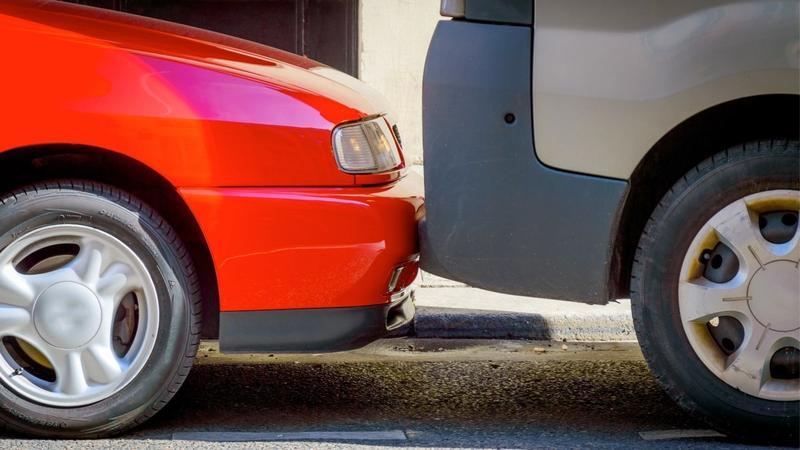This article has been updated from a previous version.
Parking lots can sometimes prove to be a trial for the patience and navigational skills of every driver.
Vehicles are constantly entering and exiting, the driver in front of you is often waiting for another vehicle to leave so they can poach the spot, and pedestrians with carts are all potential hazards to be aware of.
And that’s at the best of times. We’ll soon be approaching the worst season for driving through a public parking lot: the holiday season. Before you know it, the malls will be packed with shoppers, while impatient drivers navigate their way around mountains of plowed snow searching for that elusive parking spot closest to the mall entrance.
In fact, vehicle claims data from the Insurance Corporation of British Columbia (ICBC) notes that 150,000 crashes occurred in parking lots in 2017 prior to the COVID-19 pandemic. And as we return to a holiday shopping experience without mall capacity limits, we may see an increase in parking lot collisions this year.
Fortunately, due to low speed, injuries tend to be minimal, and it can be easier to avoid them in the first place. But collisions still happen, and they can affect your car insurance rate.
It’s also worth noting that the same fault determination rules that apply to roadway collisions also apply to parking lot collisions. Just as there are rules of the road, there are rules of the parking lot.
Your responsibilities as a driver depend on what kind of lane you are in. Three main lanes exist in parking lots, including:
- Thoroughfare lanes that lead to an exit or roadway. Drivers in thoroughfares tend to be moving faster, and thus have the right-of-way over other vehicles.
- Feeder lanes between rows of parked cars that lead to thoroughfares. Drivers in these lanes must yield to thoroughfare traffic.
- Parking lanes where exiting vehicles must yield to traffic in feeder lanes.
Common parking lot collisions
Let’s look at some typical parking lot collision scenarios and consider how fault would be assessed:
- A moving driver hits a legally parked car. This is the most common parking lot collision. It includes dinging your neighbour’s car while opening your door and similar mishaps. The moving driver would be deemed at fault.
- Two cars collide while pulling out of their parking spots. This is often a 50-50 fault split. The exception would be if one car had the last opportunity to avoid a collision.
- Two vehicles collide while competing for a parking space. Many factors are at play here. Who had the right-of-way? Who was farthest into the parking spot? And who had the last clear chance to avoid the collision?
- A car hits a moving vehicle while pulling out of a spot. Right-of-way applies; the driver pulling out is at fault.
How to handle a parking lot collision
There are many ways to avoid a collision in a parking lot. Some are obvious: pay attention, know the right-of-way rules, and don’t get distracted while scanning for a parking spot.
Some aren’t so obvious, like timing your visit to low-traffic times, backing into your spot so you don’t have to reverse while exiting, and avoiding getting sandwiched between two larger vehicles that can block your view. But what if, despite your best efforts, you collide with another vehicle in a parking lot? In this circumstance, what not to do is as important as what to do.
On one hand, tempers could easily flare. Don’t let yours get the best of you. Recrimination doesn’t help. On the other hand, do not apologize. Saying, “I’m sorry” can be construed as an admission of fault.
However, be sure not to pull away and leave, either. According to the Ontario Highway Traffic Act, drivers involved in a collision are required to remain at the scene or return immediately, if need be. In either case, provide your driver’s licence number, plate number, and contact and insurance information so the other driver can follow up. In addition, take photos of the damage to both cars.
Though parking lot collisions tend to happen at low velocity, the first order of business is to make sure no one’s been physically injured. If anyone is seriously injured, call 911. And if you can move the vehicles, clear them from parking lot traffic ways.
If someone has been injured, or if damage to both vehicles is more than a certain amount (greater than $2,000 in Ontario, Alberta, and Nova Scotia), you must call the police — then notify your insurance provider.
Keep in mind, if you’re the victim of a parking lot hit-and-run and the other driver flees, collision insurance is needed in order to cover damages to your vehicle.
How does a parking lot collision affect car insurance?
Any collision can impact your insurance rate. If you’re at fault, your premium may rise, unless you have an accident forgiveness clause. If you don’t have collision coverage and are found at fault, you may have to pay out-of-pocket for any vehicle or property damage.
Whether you’ve been in a collision or not, it’s always in your best interest to review your policy annually and compare car insurance rates to avoid overpaying. Do a quick search online for the lowest auto insurance premium you can find. With a few clicks, you may find you can save a bundle.
